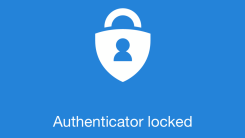Everything You Need to Watch Netflix in 4K on Your Mac
When Apple launches macOS Big Sur later this year, the new Safari 14 update will finally allow Mac users to stream Netflix in 4K HDR. But while macOS

We all have accounts we no longer use, but some apps and websites make deleting your profile a pain. In those cases, simply ignoring them is an easier option. However, unused accounts are a major security threat—all it takes is one successful data break or credential-stuffing attack to potentially compromise your personal data, financial information, or private files.
The only problem is, most of us can’t remember all the accounts we no longer use. Whether it’s the random web store you shopped at once three years ago, the lapsed streaming services you only used for the free trial, or the burner social media profiles you made, each of us has more unused accounts than we realize. Luckily, there are several resources to help you find, recover, and delete your unused, forgotten, or just hard-to-delete accounts.
If you can’t remember all the accounts you own, the first step is to find and recover them. There are a few places you should check for saved login info, and you should take the time to check each since it’s highly unlikely all your account names from over the years are stored in a single spot.
The first place to search is in your web browser. Most modern browsers can save login info for any websites you access, and you can quickly find any accounts you’ve saved from the settings menu. Here’s where to look in Chrome, Edge, Firefox, and Safari:
Chrome: Go to Settings > Passwords.
Edge: Go to Settings > Profiles > Passwords > Saved Passwords.
Firefox: Go to Preferences > Privacy & Security > Saved Logins.
Safari: Go to Preferences > Passwords.
Password managers also store your login information, so make sure to check there for any saved login info if you use one.
Many websites and apps let you sign in with your Apple ID, Facebook, Google, Instagram, or Twitter accounts. Each third-party service connected to these accounts count as its own separate account, so it’s smart to comb through the lists and see what has access.
Apple ID: On your iPhone or iPad, go to Settings > Password & Security > Apps Using Your Apple ID.
Facebook: Go to Settings > Apps and Websites.
Google: Go to myaccount.google.com then click “Security.” Check under “Third-party apps with account access” and “Signing in to other sites.”
Instagram: Go to Settings > Security > Apps & Websites
Twitter: Go to Settings and privacy > Account > Apps and Sessions > Connected Apps.
You should also search for accounts using the same usernames or email addresses with Haveibeenpwned. Also good are checkusernames.com, knowem.com, namecheck.com, and usersearch.org for looking up your old usernames. Searching for your usernames on Google could also work, and searching your email inboxes with terms like “account,” “password,” and “username” may dredge up a few forgotten logins as well.
Finally, check physical notebooks and documents saved on your phone, PC, or cloud drives for any login credentials you jotted down.
Once you know which apps and websites you have accounts for, the next step is to recover them. This is easy if you store your passwords in your browser or password manager, or if you have them memorized, but if not, you’ll need to recover your password.
Pretty much every login page will have the option to recover your username, password, and/or email address so you can log back in. Unfortunately, this only works if you still have access to the email (or in some cases, phone number) you used to sign up with. If that’s not an option, your only course of action is to try and reach out to the company directly.
In an ideal world, every abandoned account would simply auto-delete after a long period of unuse, but most just sit there vulnerably until the user finally closes it—but most don’t, either because users ignore the account for so long they forget it exists, or the company makes it too difficult to easily close the account and delete your data. Thing is, no matter how confusing it is to delete an account, most larger companies must comply with international data privacy laws that give users the right to delete their data and close their accounts. The trick is knowing where to look.
We’ve previously covered how to delete your accounts and all personal data from 15 of the most popular social media services. We also have a guide to doing the same on Clubhouse.
Consumer reports also have guides on deleting various accounts, including several stubbornly persistent services like SiriusXM, Walgreens, and Groupon. If those guides don’t have it, Reddit is also a great source.
Those guides won’t cover everything, though, and it would be nearly impossible to list out the exact steps for every app or website out there. However, there are a few general tips that will help you find how to delete your accounts:
In most cases, account deletion options are found in the settings menu, usually under menus labeled “Account,” “Profile,” or “Privacy.” Log in to the account, then check every menu.
Now, chances are you’re here because you already checked for a “delete account” button and couldn’t find one, but there are a few other places to check, such as official support pages, forums, or FAQs. If no such resources exist, try looking up the privacy policy. This is usually posted publicly, so search for it online or do a thorough sweep through the app. Don’t read through the whole thing if you find it—just search for terms like “delete,” “cancel,” or “deactivate,” and you should find the proper section.
Still no luck? Contact the company by email, phone, or even their official social media profiles. In most cases, you’ll be able to find the steps for deleting your account before it comes to this, but it’s still an option to keep in mind.

When Apple launches macOS Big Sur later this year, the new Safari 14 update will finally allow Mac users to stream Netflix in 4K HDR. But while macOS

We’re all accustomed to taking screenshots on our Android phones, Apple devices, and computers, but you can also take screenshots on your smart TV or

The dreaded “Zoombombing” is a risk for all Zoom meetings, even private rooms secured with a passcode and data encryption. All it takes is for the inv

A big thank-you to Apple for exhibiting a bit of restraint with its “best apps of 2020" list; wading through a mere 15 of the best or trendy apps for

Microsoft is testing out a new password-management feature in its Authenticator app, which makes the former even more useful as a one-stop shop for al

Microsoft’s Outlook and email apps on Windows, Mac, and the web are getting some big changes in the coming months as part of the company’s “One Outloo

Hackers are exploiting a strange bug that lets a simple text string ‘corrupt’ your Windows 10 or Windows XP computer’s hard drive if you extract a ZIP

Love it or hate it, the MacBook Pro’s Touch Bar is a unique piece of tech. While Apple is rumored to be phasing out the Touch Bar later this year, the
We are a comprehensive and trusted information platform dedicated to delivering high-quality content across a wide range of topics, including society, technology, business, health, culture, and entertainment.
From breaking news to in-depth reports, we adhere to the principles of accuracy and diverse perspectives, helping readers find clarity and reliability in today’s fast-paced information landscape.
Our goal is to be a dependable source of knowledge for every reader—making information not only accessible but truly trustworthy. Looking ahead, we will continue to enhance our content and services, connecting the world and delivering value.